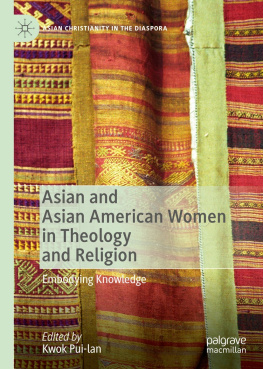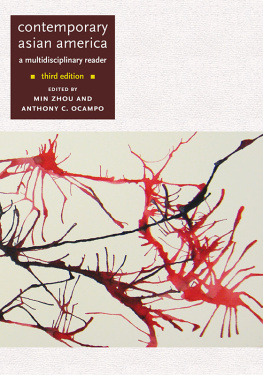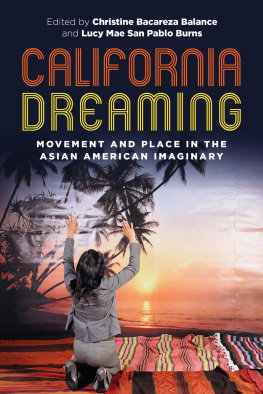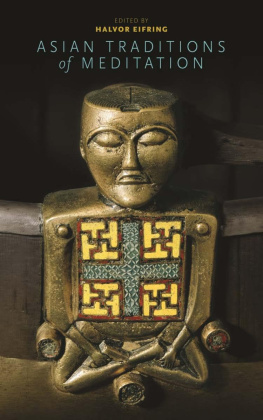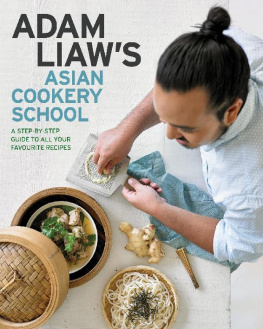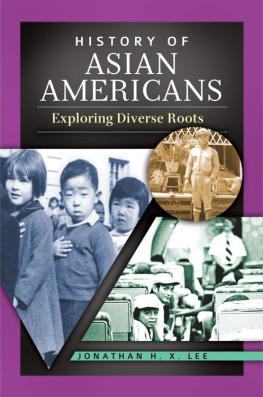Thank you for buying this ebook, published by NYU Press.
Sign up for our e-newsletters to receive information about forthcoming books, special discounts, and more!
Sign Up!
About NYU Press
A publisher of original scholarship since its founding in 1916, New York University Press Produces more than 100 new books each year, with a backlist of 3,000 titles in print. Working across the humanities and social sciences, NYU Press has award-winning lists in sociology, law, cultural and American studies, religion, American history, anthropology, politics, criminology, media and communication, literary studies, and psychology.
EATING ASIAN AMERICA
Eating Asian America
A Food Studies Reader
EDITED BY
Robert Ji-Song Ku,
Martin F. Manalansan IV,
and Anita Mannur

NEW YORK UNIVERSITY PRESS
New York and London
www.nyupress.org
2013 by New York University
All rights reserved
References to Internet websites (URLs) were accurate at the time of writing. Neither the author nor New York University Press is responsible for URLs that may have expired or changed since the manuscript was prepared.
FOR LIBRARY OF CONGRESS CATALOGING-IN-PUBLICATION DATA
PLEASE CONTACT THE LIBRARY OF CONGRESS
ISBN: 978-1-4798-1023-9 (cl)
ISBN: 978-1-4798-6925-1 (pb)
New York University Press books are printed on acid-free paper, and their binding materials are chosen for strength and durability. We strive to use environmentally responsible suppliers and materials to the greatest extent possible in publishing our books.
Manufactured in the United States of America
10 9 8 7 6 5 4 3 2 1
Also available as an ebook
LIST OF FIGURES AND MAPS
ACKNOWLEDGMENTS
The familiar food-related adage cautions, Too many cooks spoil the broth, which may be true, but not for this book. A great number of cooks have had their hands in the completion of this collection. First and foremost, we thank the seventeen contributors for their enthusiasm, diligence, creativity, erudition, and friendship.
We thank Eric Zinner, editor in chief of New York University Press, who believed in our project and pushed us to finish it. We also thank production editor Alexia Traganas and assistant editors Ciara McLaughlin and Alicia Nadkarni for their support and guidance throughout the completion of this book. We are grateful for the constructive feedback from the two anonymous readers of our manuscript. Their thoughtful comments and suggestions have improved this book immeasurably.
We would be remiss if we did not acknowledge the Association for Asian American Studies, as our participation in the 2010 meeting in Austin, Texas, and the 2011 meeting in New Orleans, Louisiana, provided the original impetus for the teamwork that culminated in the publication of this book. We thank the AAAS officers, conference organizers, and members for their intellectual support and personal friendships.
Finally, we three editors would like to make the following personal acknowledgments.
Anita: I wish to thank my colleagues at Miami: Yu-Fang Cho, Nalin Jayasena, Mad Detloff, Luming Mao, and Gaile Pohlhaus for their generous intellectual feedback. My thanks to Jason Palmeri and Lisa Weems for an ever evolving context for critical eating in southwest Ohio, and for their continued support and encouragement, I thank Michael Needham, Julie Minich, Bill Johnson Gonzalez, Allan Isaac, and Cathy Schlund-Vials.
Martin: I want to express my gratitude to Lisa Nakamura and Kent Ono, who were especially supportive during my research. Special thanks to Bill Johnson Gonzalez, Allan Isaac, Jose Capino, Rick Bonus, and members of the Filipino American studies mafia for their social and scholarly camaraderie, especially during delectable meals, spicy chats, and warm boisterous laughter. I dedicate my work to my parents and family for providing unconditional love amid feasts of adobo and sinigang.
Robert: To all those who Ive cooked for this past few years, thank you for enjoying my food. Thank you especially to our apocryphal Momofuku bo ssam gang (Kevin Hatch, Matt Johnson, Julia Walker, and Deanne Westerman). My gratitude goes, too, to my Asian and Asian American studies cohorts at Binghamton University: Immanuel Kim, Sonja Kim, Cynthia Marasigan, Rumiko Sode, Roberta Strippoli, and Lisa Yun. My love goes to Nancy, Eliot, and Oliver.
An Alimentary Introduction
ROBERT JI-SONG KU, MARTIN F. MANALANSAN IV, AND ANITA MANNUR
Understanding and apprehending Asian American food experiences begin and end with the body. The category Asian American is a historical U.S. federal census designation that rests in part on the long history of what might be described as the Foucauldian control and discipline around the movement of Asian bodies to America, in part on their toil in various agricultural fields and plantations, fruit orchards, fisheries, and salmon canneries in Hawaii, California, the Pacific Northwest, and the South. That these same bodies sweated and slaved over hot stoves and small kitchens to produce many of Americas ubiquitous ethnic take-out food establishmentsChinese, Thai, Indian, Middle Eastern, Japanese, and so forthis neither coincidental nor incidental.
Many people in the United States, including the students in our Asian American studies and food studies classes, often wonder whether Asians became a prominent part of the American food landscape because of their ancestral homelands intrinsically delicious foods. Or perhaps Asians are exceptionally devoted not only to eating good food but also to the entrepreneurial aspect of food, that is, to the business of producing and distributing food. Or perhaps Asians are naturally great cooks, just as they are popularly perceived as innately good at math. Simply put, is the love of food an indelibleand inescapablepart of the Asian DNA?
This book is a reminder that social, political, economic, and historical forces, as well as power inequalities, including discriminatory immigration and land laws, have circumscribed Asians materially and symbolically in the alimentary realm, forcing them into indentured agricultural work and lifetimes spent in restaurants and other food service and processing industries. While race is often popularly understood as a function of skin color and other physical attributes, critical race scholars like Michael Omi and Howard Winant,equated with what he or she ingests. The shortif not apocryphalversion of the nineteenth-century French gastronome Jean Anthelme Brillat-Savarins much celebrated and quoted classic dictum, you are what you eat, has often been interpreted as meaning that an individual is, first and foremost, marked and signified by his or her food habits.
To define a person or a group of people principally by the food they eat is, however, to uncritically and narrowly essentialize them through the corporeal terms of gustation and digestion. Also, those marked in such a way come to embody the foods and the corresponding values and meanings attached to them. Consider the racialized motives in perpetuating the image of African Americans eating fried chicken or watermelon, as Psyche Williams-Forson points out in Building Chickens out of Chicken Legs: Black Woman, Food, and Power and Kyla Wazana Tompkins illustrates in Racial Indigestion: Eating Bodies in the 19th Century. On the one hand, the controversy over the practice of eating dogsespecially in places like the United States where the distinction between what is pet and what is food is understood as affectively stableis about the taxonomy of different types of humans. On the other hand, this controversy is about determining who is a real American and who is not, what sort of cultural practice is mainstream and what is exotic, and what sort of food is disgusting and what is palatable.
Next page

